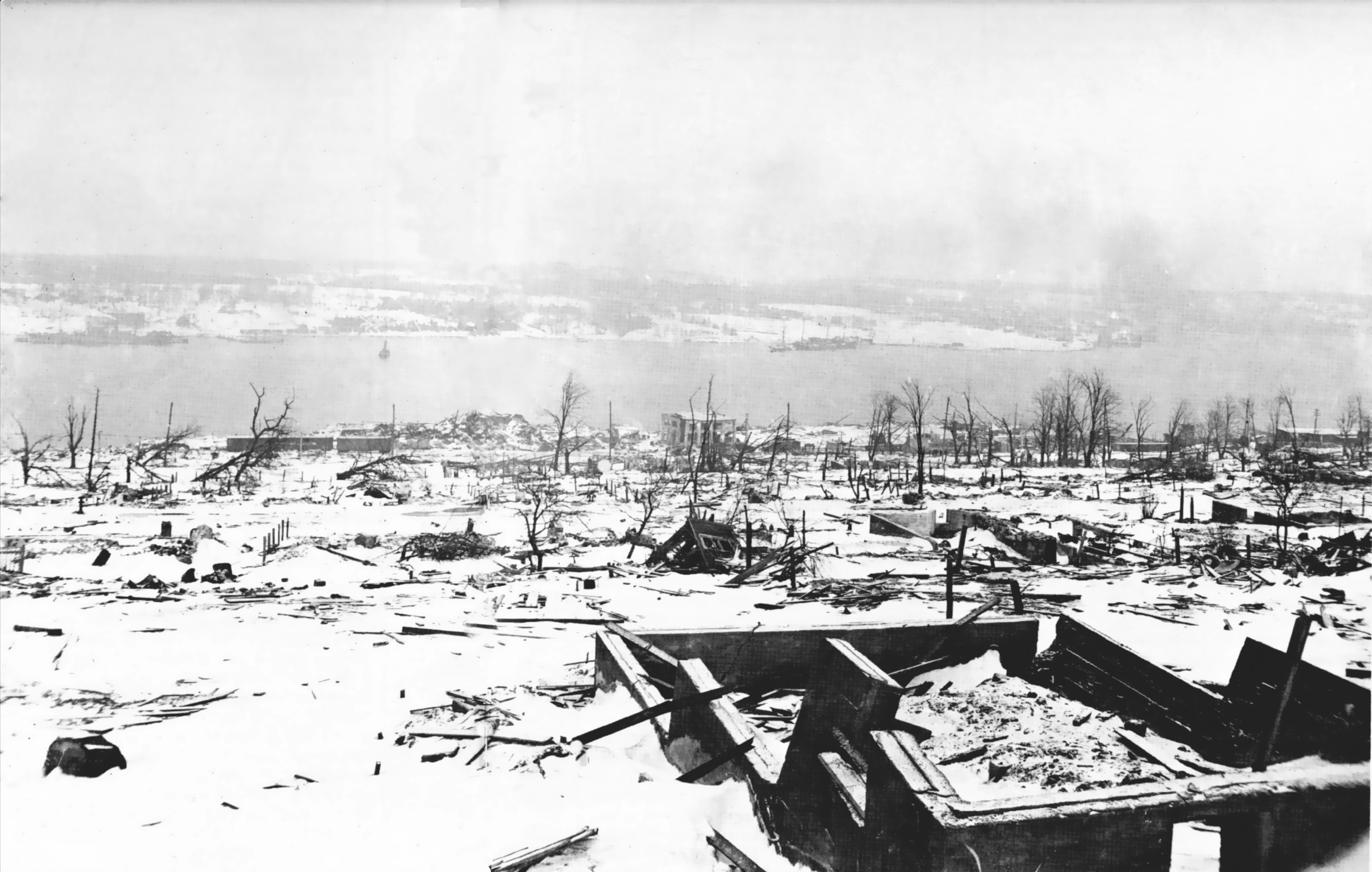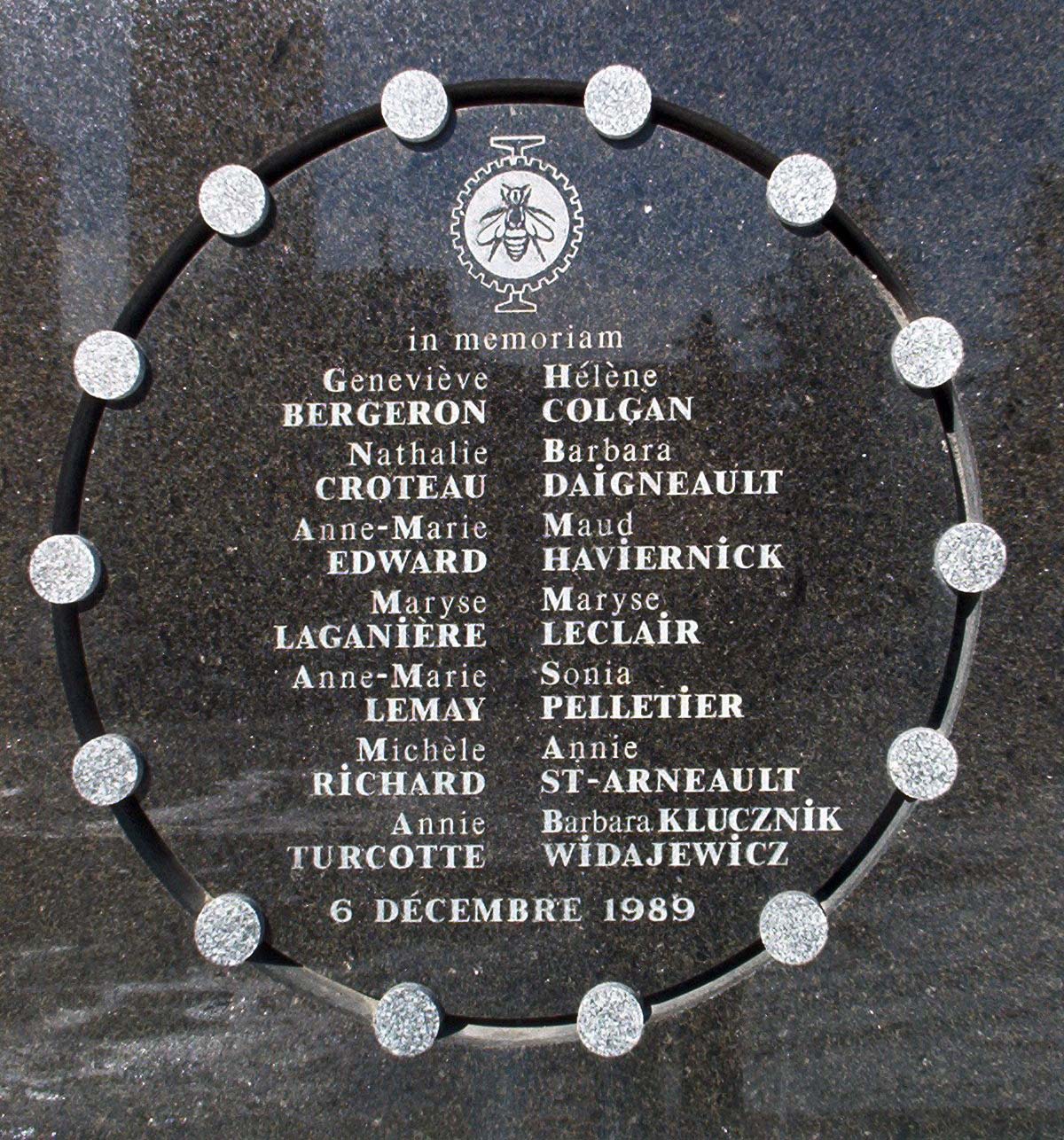Because of Canada's more behind-the-scenes role in world history, I don't think we have anything that resonates quite so much as 9/11. However, I do believe that Canadians have their own "dark day": December 6.
Not many people talk about it (compared to 9/11 at least), not even in Canada itself. But I would posit this as a suitable candidate for one of the darkest days in Canadian history. Why? Because not one, but TWO tragedies took place on December 6.
December 6, 1917: The Halifax Explosion
 |
| Aftermath after the Halifax Explosion (Image (c) Library and Archives Canada; Photographer unknown) |
With such a bustling harbour, perhaps it was only a matter of time before something went wrong. On the morning of Dec. 6, 1917, a Norwegian ship, the S.S. Imo, was scheduled to leave Halifax after spending several days refuelling before heading on to New York. She had originally been scheduled for a Dec. 5 departure, but had been delayed due to anti-submarine nets being placed in the Halifax harbour in the evening. So, by the next morning, she was eager to be underway.
In order to do so, however, she must pass through a channel known as the Narrows. Harbour protocol dictated that ships were supposed to pass each other port-to-port, each taking the starboard side of the channel in order to keep traffic running smoothly. However, to avoid collision with a tug-boat coming into the harbour at the time, the Imo swerved and overshot her turn into the Narrows, ending up closer to the port side than was safe. This combined with her going above the proper speed limit sent her straight into the path of the French ship SS Mont-Blanc that was entering the harbour at the same time.
For all intents and purposes, the collision should have been a mild one. Both ships were travelling at low speed, and had already stopped their engines: it was their continued momentum in the time it took to stop that caused the accident. However, disaster was imminent due to two factors: the collision had caused a fire on the Mont-Blanc, and, being a cargo ship on her way to the European front, she was stocked full of explosives.
The Mont-Blanc's crew fled the ship, but the scene drew a crowd of spectators. It is understandable: on what was just a normal school and working day, a ship caught fire in the Halifax Harbour. It's the same sort of human behaviour that makes motorists slow down upon coming across an accident scene. So many Haligonians stopped what they were doing to go out to the harbour to watch, oblivious to the Mont-Blanc's cargo and what it meant. Even when the Mont-Blanc's crew tried to warn their rescuers about the imminent danger, they were not heard in the confusion.
At 9:04 a.m., the Mont-Blanc exploded, sending white-hot metal debris flying almost 300 metres into the air, which rained down on the city and its inhabitants. The shockwave destroyed the buildings within a 2.6 kilometre radius, but damage stretched far further to nearby communities and was felt in the other maritime provinces. On top of this, the explosion vaporized most of the water in the harbour, and the seawater rushing in to replace it swelled into a tsunami wave 16 metres high.
 |
| Halifax two days after the Explosion (Image in Public Domain, found via Wikimedia Commons) |
December 6, 1989: The École Polytechnique Massacre
Chances are, if there's one major Canadian disaster that took place on Dec. 6 that you'll be hearing about on the news, it's this one. Why? Because the events of the École Polytechnique Massacre led to December 6 now being memorialized in Canada as the National Day of Remembrance and Action on Violence Against Women. Perhaps that name alone suggests where this is going, but in short: this is the deadliest school shooting in Canadian history.
 |
| The École Polytechnique in Montreal, Quebec, as it appears today. (Photograph by MyName(Slp1) on Wikimedia Commons, Image used according to Creative Commons 3.0) |
After this, Lépine continued on through the school, aiming his attacks at classrooms, students in the corridors, and a cafeteria, before shooting himself in the head. In total, 14 women (13 students and one employee) were dead, and another 14 people (including 4 men) were injured.
 | |
| Commemorative Plaque at École Polytechnique listing the names of the deceased. (Image in Public Domain, found via Wikimedia Commons) |
It's no wonder then that the anniversary of the École Polytechnique Massacre has become a day for remembrance, then, as Canadians continue to raise awareness of violent acts against women in general. However, I wonder if Lépine realized the coincidence his choice of date was creating. December 6 was already an infamous day in Canada - and he made it even more so.
Resources
"École Polytechnique Massacre." Wikipedia. 6 Dec 2014.
"Halifax Explosion." Wikipedia. 6 Dec. 2014.
HalifaxExplosion.org. 6 Dec. 2014.
Images
All images used under Creative Commons 3.0, individual credits in the captions

No comments:
Post a Comment